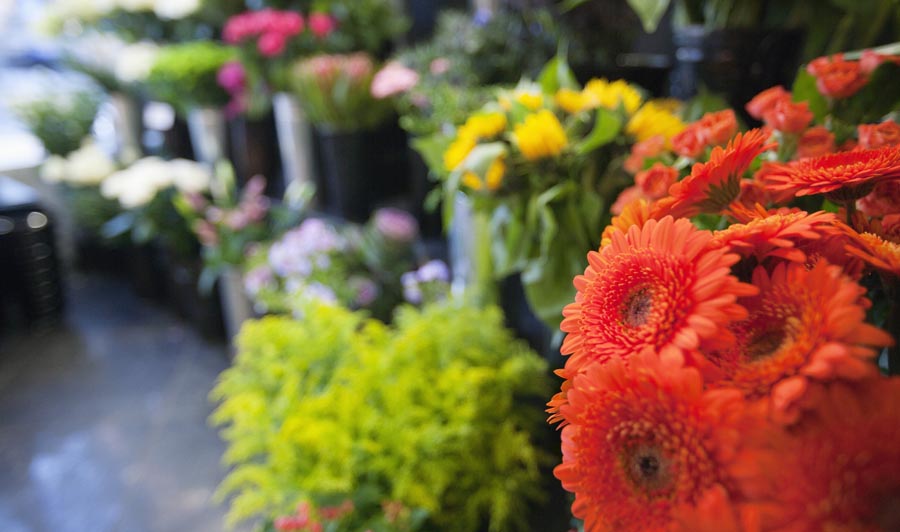
All gardeners know just how much of a pain weeds can be.
These pesky little things take water, light and nutrients from our prized plants and their root systems can quickly get out of hand.
Like me, I am sure you have tried all kinds of methods, herbicides and string trimmers to keep them at bay.
One question I heard asked recently was ‘will treflan kill my sunflowers?’. So let’s take a closer look at Treflan, how it can be used and whether it is safe to use on and around sunflowers.
Will Treflan Kill Sunflowers?
No Treflan won’t kill or harm sunflowers in any way. It is a preemergence herbicide that does a good job of killing grassy weeds and is used by commercial and amateur gardeners alike.
What is Treflan?
Also known as trifluralin, Treflan, is a pre-emergence herbicide designed to nip the emergence of certain annual grasses and weeds in the bud before they can rear their ugly head.
Preemergence herbicides are applied before weeds or grasses even germinate. This is in contrast to postemergence herbicides, like clethodim, which are applied when weeds or grasses have already appeared.
Treflan is popular in the USA, where around 6,000 tonnes (14million pounds) are used each year.
It is mainly used in commercial environments, particularly commercially vegetable growing, but is also used by amateur gardeners to control weeds.
A quick word of warning, Treflan is a yellow herbicide, so pretty much everything it comes into contact with turns yellow!
Is Treflan the Same as Preen?
Before we dive into the merits of using Treflan around sunflowers, I thought we should quickly tackle another question I saw asked a few times when I was doing some background research for this article.
Is Treflan the same as Preen?
The answer is, that they are similar but not exactly the same.
RELATED ===> Can a Sunflower Grow Two Heads?
They are both pre-emergence herbicides and both perform largely the same job. And Treflan is the active ingredient in Preen.
However, Preen also includes Oryzalin which helps it control certain perennial weeds like dandelions and plantains.
There is also a version of Preen with added fertilizer.
The terms are used interchangeably, probably for a good reason but there are some minute differences.
Is Treflan Dangerous to Sunflowers?

Treflan is completely fine to use in and around sunflowers and will not damage them in any way.
Treflan is compatible with a host of plants and vegetables other than sunflowers. These include beans, broccoli, brussel sprouts, cabbage, carrots, cauliflower, kale, okra, peanuts and peas.
Is Treflan Safe?
Some questions have been raised about the safety of Treflan. In fact, they are probably more than questions.
Trifluralin, the trade name for Treflan, has been banned in the European Union since 2008 due to its high toxicity to aquatic life.
It is also on the United States Environmental Protect Agency list of Hazardous Air Pollutants as a regulated substance.
Aside from its toxicity to aquatic life, it has been shown to have moderate toxicity to other animals, in particular rodents and dogs.
For humans, it can cause skin and eye irritation.
But if used sensibly, Treflan is safe to use, a fact borne out by its sheer popularity in the USA!
What should also be remembered is the fact that Treflan is not organic, and it can remain in the soil for up to 14 months after application.
With Treflan being pretty efficient at killing grasses and preventing them from germinating, you don’t want to use Treflan on soil where you may intend to grow corn or other grass-related crops in the near future.
The same goes for edible crops. Planting them in soil that has been treated with Treflan in the last 12 to 14 months, is a big no-no as toxic traces are likely to still be present in the soil.
RELATED ===> How Much Water Does a Sunflower Need a Day?
How Do You Use Treflan?
Your best bet for Treflan is to apply it around two to four weeks before your targeted weeds germinate.
Spray Treflan evenly onto the top layer of soil, and then make sure you mix the top two to three inches of the soil within 24 hours to work the Treflan in.
Ideally, do this using a rotary cultivator, or if not a shovel or hand rake will work. The soil needs to be worked over twice, the second time in the opposite direction.
Don’t forget what we mentioned above about it being harmful to some animals, so try and make the garden-off limits until the product dries.
As Treflan has low solubility and stays in the soil for up to a year, if you apply it again just before the first frost of Fall it will remain effective throughout the winter.
You can then apply can the following Spring to prevent weeds from germinating that year.
How Much Treflan Should You Use?
Unfortunately, as is the case with any herbicide, there is no definitive answer to this question. It depends upon what you are trying to kill, the size and state of your soil and a few other factors.
It is a balancing act, apply too little and those pesky weeds will work their way to the surface in parts of your garden and apply too much and you may damage your vegetation.
Remember no single herbicide will control all weeds either.
Let’s look at what the agricultural extension service of the University of Maryland recommends:
- For granular Treflan (Treflan comes in both granular and liquid forms) it recommends 11 to 16 tablespoons of 5 percent granular Treflan per 1,000 square feet of garden.
- For liquid Treflan use two to three level teaspoons of the liquid that contains 4 pounds of herbicide per gallon for each 1,000 square feet of garden.
A more general guide is:
- For coarse or light soils: Use 2.25 teaspoons of Treflan per gallon of water
- For medium soils: Use 3.33 teaspoons of Treflan per gallon of water
- For fine soils: Use 4.5 teaspoons of Treflan per gallon of water
Either way, read the instructions and do your research before using it.
What Herbicides Can You Use on Sunflowers?

Can You Spray Raptor On Sunflowers?
Raptor is suitable for use in Clearfield sunflower varieties only. This is because it is an imidazolinone herbicide that many sunflower varieties aren’t tolerant to.
Can You Spray Roundup On Sunflowers?
Yes but on mature sunflowers. Roundup will not harm them.
RELATED ===> Will Clethodim Kill Sunflowers?
Can You Spray Atrazine On Sunflowers?
No. Atrazine can lead to damage to sunflowers, such as stunting of seedlings, yellowing of leaves, or leaf tip burning. In worst-case scenarios, it can be fatal to sunflowers.
Can You Spray 2, 4-D On Sunflowers?
You should be careful using 2, 4-D on sunflowers. A long-term study in Canada revealed that 2, 4-D drift caused damage to sunflowers.
Can You Spray Cadre On Sunflowers?
Cadre should be used on Clearfield sunflowers only.
Can You Spray Clethodim On Sunflowers?
Yes, Clethodim is safe to use on sunflowers of all varieties.
Final Thoughts
Treflan is fine to use on and around sunflowers.
In terms of its effectiveness, although maybe not great for pigweed or coffee weed, Treflan is a pretty good grass herbicide.
It is also usually cheaper than a lot of other herbicides too.
That is why it is so popular with both commercial and amateur gardeners.
Follow the instructions and take the necessary safety precautions and Treflan is a great way to tackle grassy weeds before they even take shape.


In the article, it says you can use Treflan for broccoli, brussel sprouts, etc. when I read farther it said not to use on edible crops. This seems contradictory. Could you explain, please?
Hi Suzanne. Certainly full details of how Treflan can be used can be found on this official instruction of usage leaflet.